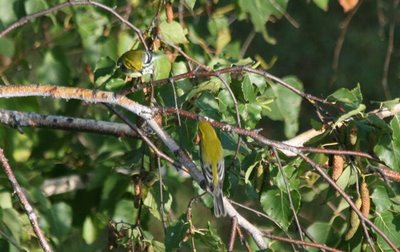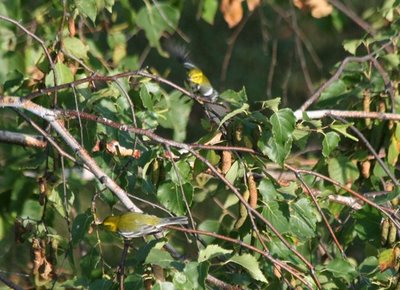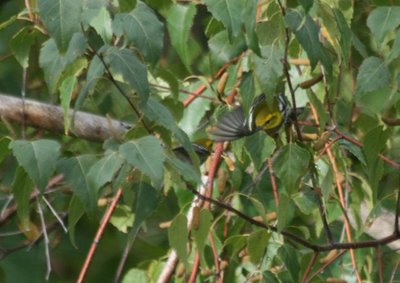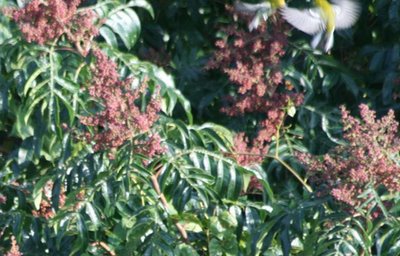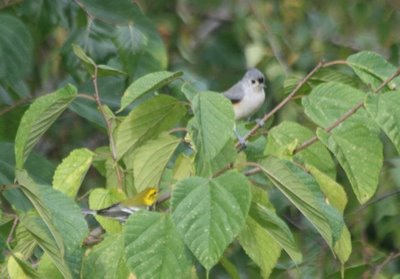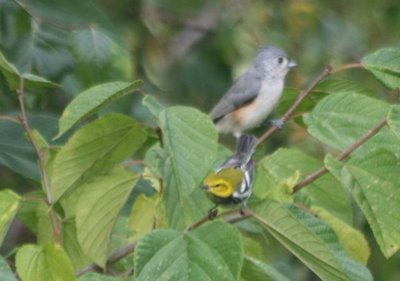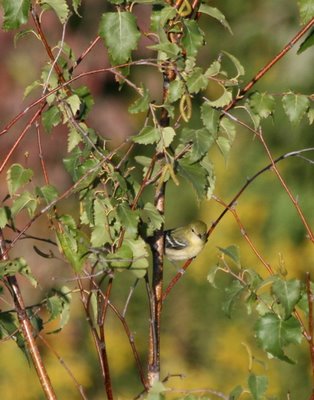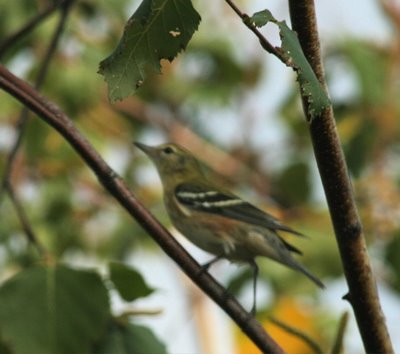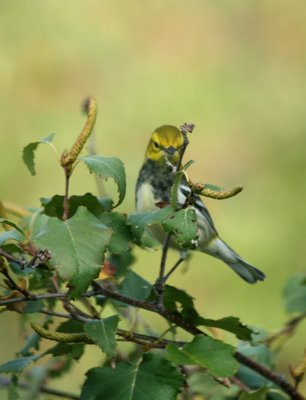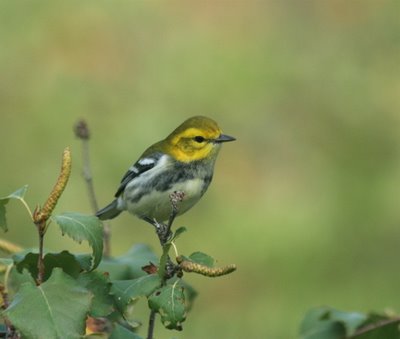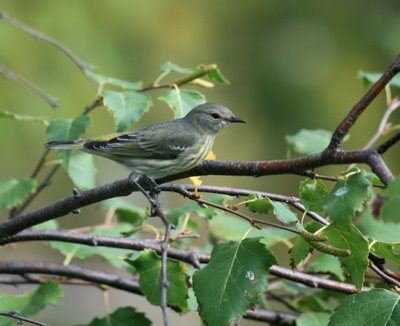Anting in Birds
Watching our backyard scene for 16 years now, we've been privileged to see recurring themes in bird behavior. Did you know that gray birches host a lot of ants, and that black-throated green warblers like to pick the ants off the trunks and run them through their plumage? Me, neither, and had I seen it once, I'd have thought it was a nice thing to see, but now we see it every autumn.
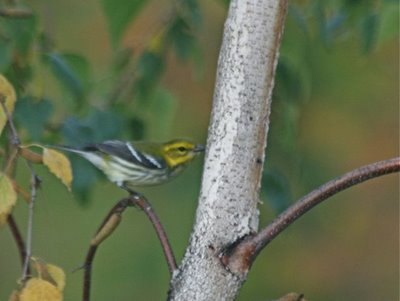 A female black-throated green warbler picks herself an ant off a birch trunk.
A female black-throated green warbler picks herself an ant off a birch trunk.I first saw a black-throated green warbler anting in Salmonier, Newfoundland in 1981 or so, when many of you whippersnappers were watching reruns of The Brady Bunch. Anting birds crush ants and pass the bodies through their plumage, presumably anointing themselves with that pungent sweet smelling formic acid that mashed ants (and mad ants) secrete. Phew. Maybe it routs feather mites that would otherwise chew their barbules to powder. Maybe it discourages lice. Maybe it's a warbler's version of Origins' "Perfect World" Green Tea Skin Protector, something I am hopelessly hooked on. My nictitating membranes flip up over my eyeballs when I use that stuff.
Maybe birches attract a certain species of ant that's good for anting, or maybe it's simpler than that: the ants that trickle up and down its trunk in stuttering lines show up well against white bark. Whatever the reason, warblers like to ant on birches.
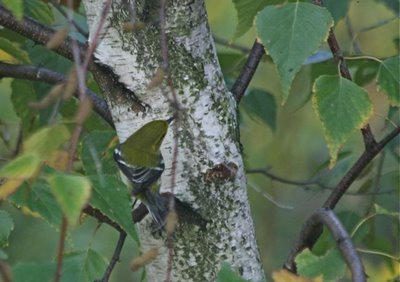 First, you get yourself an ant or two.
First, you get yourself an ant or two.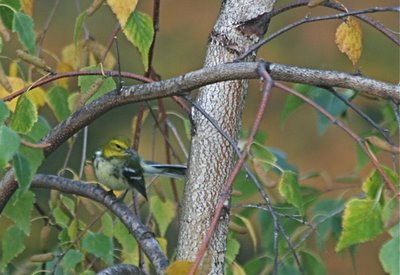 Then you pass it through your wing and tail feathers, just as if you were preening, but with an ant in your bill.
Then you pass it through your wing and tail feathers, just as if you were preening, but with an ant in your bill.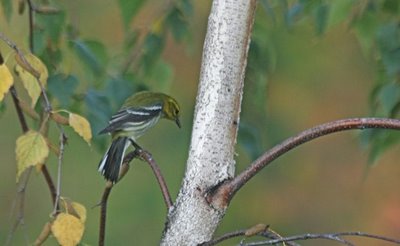 Belly feathers get some, too. Ooh, it smells so good.
Belly feathers get some, too. Ooh, it smells so good.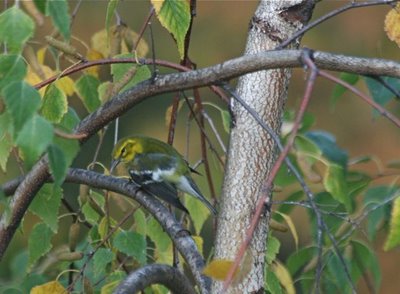 Bring your leg over your wing and scratch that face. Ahhhh.
Bring your leg over your wing and scratch that face. Ahhhh.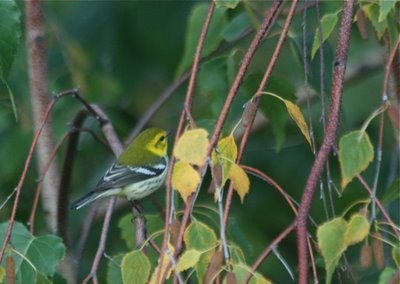 Feeling ever so dapper now. Smooth, silky.
Feeling ever so dapper now. Smooth, silky.Oh, look. A lady black-throated green.
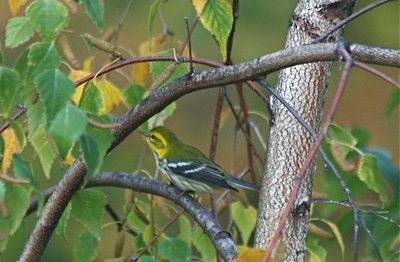 She likes to ant, too.
She likes to ant, too.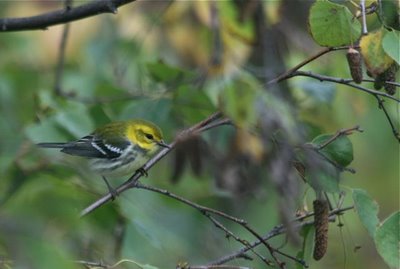
Back to our little gent.
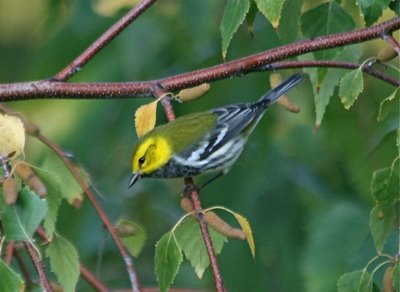 Beautiful beyond description, and freshly dressed with formic acid, he's ready to migrate. Ah, warblers, how I will miss them when they leave. We're down to yellow-rumps now, the latest migrants, maybe a Tennessee or a stray Nashville.
Beautiful beyond description, and freshly dressed with formic acid, he's ready to migrate. Ah, warblers, how I will miss them when they leave. We're down to yellow-rumps now, the latest migrants, maybe a Tennessee or a stray Nashville.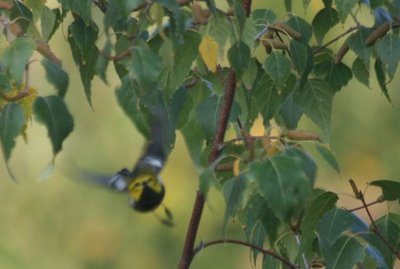 See you next April, dearie.
See you next April, dearie.Labels: anting, anting in birds, birch trees, black-throated green warbler

